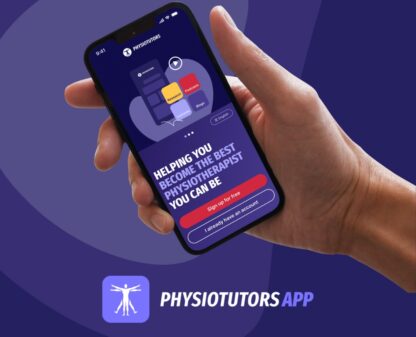Migraine

Introduction
- Migraines, derived from Greek “hemikrania,” are characterized by throbbing pain on one side of the head.
- Attacks last from several hours to days, often accompanied by feeling unwell and sensitivity to light or sound.
- Prevalence: 1 in 5 women, 1 in 15 men, typically onset in early adulthood.
Examination
- Migraine headache without aura: recurrent attacks lasting 4-72 hours, unilateral pulsating pain, moderate to severe intensity, aggravated by routine physical activity, associated with nausea, photophobia, and phonophobia.
- Migraine headache with aura: recurrent attacks with unilateral fully-reversible visual, sensory, or CNS symptoms, followed by headache.
- Examination includes provocation testing, neck endurance testing, and cervical ROM assessment.
Treatment
- Sub-analyses of physiotherapy interventions show effectiveness of aerobic exercise and combination physical/psychological interventions in reducing migraine attack duration.
- Aerobic exercise reduces migraine frequency and duration.
- Neck endurance exercises may be beneficial for reducing migraine frequency and intensity.
References
Hall, T., Briffa, K., Hopper, D., & Robinson, K. (2010). Long-term stability and minimal detectable change of the cervical flexion-rotation test. journal of orthopaedic & sports physical therapy, 40(4), 225-229.
Hall, T. M., Briffa, K., Hopper, D., & Robinson, K. (2010). Comparative analysis and diagnostic accuracy of the cervical flexion–rotation test. The journal of headache and pain, 11(5), 391-397.
Krøll, L. S., Hammarlund, C. S., Linde, M., Gard, G., & Jensen, R. H. (2018). The effects of aerobic exercise for persons with migraine and co-existing tension-type headache and neck pain. A randomized, controlled, clinical trial. Cephalalgia, 38(12), 1805-1816.
Lemmens, J., De Pauw, J., Van Soom, T., Michiels, S., Versijpt, J., Van Breda, E., … & De Hertogh, W. (2019). The effect of aerobic exercise on the number of migraine days, duration and pain intensity in migraine: a systematic literature review and meta-analysis. The journal of headache and pain, 20(1), 1-9.
Lipton, R. B., Bigal, M. E., Diamond, M., Freitag, F., Reed, M. L., & Stewart, W. F. (2007). Migraine prevalence, disease burden, and the need for preventive therapy. Neurology, 68(5), 343-349.
Luedtke, K., Allers, A., Schulte, L. H., & May, A. (2016). Efficacy of interventions used by physiotherapists for patients with headache and migraine—systematic review and meta-analysis. Cephalalgia, 36(5), 474-492.
Ogince, M., Hall, T., Robinson, K., & Blackmore, A. M. (2007). The diagnostic validity of the cervical flexion–rotation test in C1/2-related cervicogenic headache. Manual therapy, 12(3), 256-262.
Olesen, J. (2018). International classification of headache disorders. The Lancet Neurology, 17(5), 396-397.
Stovner, L. J., Hagen, K., Jensen, R., Katsarava, Z., Lipton, R. B., Scher, A. I., … & Zwart, J. A. (2007). The global burden of headache: a documentation of headache prevalence and disability worldwide. Cephalalgia, 27(3), 193-210.
Szikszay, T. M., Hoenick, S., von Korn, K., Meise, R., Schwarz, A., Starke, W., & Luedtke, K. (2019). Which examination tests detect differences in cervical musculoskeletal impairments in people with migraine? A systematic review and meta-analysis. Physical therapy, 99(5), 549-569.


